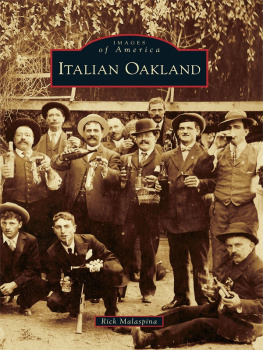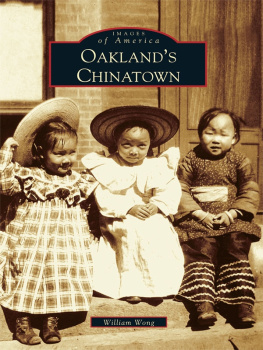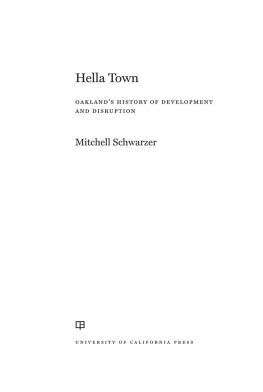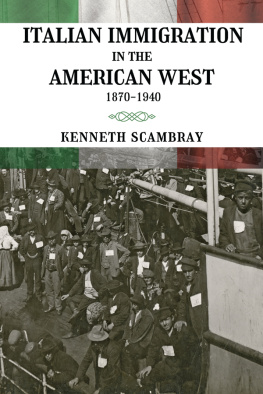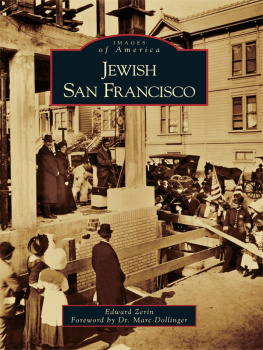Most of the images in this book came not from libraries or museums or historical organizations, but from ordinary people, people who generously contributed photographs and documents from their personal and family collections. They deserve the most recognition and gratitude. Visiting with them, hearing their stories, and sharing their memories made for a pleasurable and rewarding experience. The majority of images in these pages are derived from the collections of Louie Alberti, Manny and Marie Camara, Bev Chernoff, Cecile Cuttitta, Al and Deanna DeNurra, Karen Garcia, Elsie Giuntoli, and Angie Raniero. (Special thanks to Angie, and bless her heart, for never letting a visit pass without the pleasure of partaking in her homemade biscotti and bread sticks at her kitchen table. Just like the old days.)
Thanks, also, to the following for the information, insight, and photographs they provided: Colombo Club historian John Penna; archivist and man for all seasons at the Fratellanza Club, Gianfranco Sciacero; local historian and raconteur Ray Raineri (when it comes to Oakland Italian American history and lore, all roads lead to Ray); Jess Giambroni, a young man with an appreciation of the past; and Ray Remo Mellana, a loyal and prolific correspondent and a true Temescalian. Helpful in other ways were Ed Basso, professor Teri Ann Bengiveno, Elma and Leroy Casale, Dave Newhouse, Jeff Norman, professor Laura E. Ruberto, and Richard Vannucci. For research assistance, thanks to Allan Fisher of the Western Railway Museum.
Loving and everlasting gratitudefor much more than her help hereto Leigh Trivette-Malaspina. Her support, advice, and patience, together with her expert technical assistance, were vital to the completion of this project. (She is not even of Italian descent, yet she appreciates and tolerates us all the same. Amazing.)
Finally a nod to the Oakland and East Bay Italian American community, particularly the guys and gals of the Colombo, Fratellanza, and Ligure clubs, and members of other Italian American cultural and historical associations. You are keeping the legacy alive. And whether you know it or not, you are a source of inspiration and sustenance. Grazie a tutti!
LOCAL LEXICONS AND PROVERBS
As they approached their 90s, two pals from Oaklands old Italian American community joined in on a special project. Ray Mellana and Ed Basso were born and grew up in the Temescal neighborhood of north Oakland. Ray became a lawyer and civic leader in the area, Ed a Bank of America manager. Ray was already writing his memoirs, prodded by his son John, a history teacher, when Rays daughter Linda, a retired English teacher, encouraged him to include in his recollections a sampling of the Italian dialect spoken in the Italian Oakland of Rays youth. He reached out to Ed, with his ironclad memory, and the result is what Ray titled, A Piemontese Lexicon: The Words of My Youth. It became part of Rays memoirs, which he shares with family and friends.
Like other Italian dialectsand they were and are numerousthe one spoken in the Piedmont region of northern Italy, where many immigrants to Oakland originated, is a rustic and quirky, even humorous, rendition of the Italian language. In old Oakland, dialect was a primary means of communication, especially since many people had come directly from Italy.
The Piemontese dialect was my first means of communication within the family, Ray remembers. And I continued to speak it into kindergarten.
Other Oakland Italians from other areas of ItalyGenoa, Tuscany, Venice, and southern Italy, for examplespoke their own dialects. To communicate with each other, they would mix different dialects, add some English, and come up with what amounted to a new, and now virtually lost, language.
Angie Rainero, another true Temescalian, calls that other language North Beach Italian, referring to the Italian district of San Francisco. An amalgam of regional dialect and newfound English, it created whole new words, with no resemblance to formal Italian. For example, lo storo meant the store, and il floro meant the floor.
We all grew up speaking Italian, but most of us spoke the dialect of our parents, and the true, pure Italian language got lost along the way, Angie says.
The following pages contain portions of Ray and Eds Piemontese Lexicon and Angies North Beach Italian.
RAY MELLANAS PRONUNCIATION GUIDE
To pronounce the following words and phrases as they are meant to sound, remember that c before a, o, and u, and before consonants has a sound similar to the English k. Before e and i, the c has a sound similar to the English ch, as in church. Also be sure to emphasize the broad a and roll those rs.
Here are examples of Piemontese dialect and North Beach Italian followed by translations and formal Italian.
Andooma: Lets go. Andiamo .
Andooma, stooma, o cosa fooma?: Are we going, staying, or what are we doing? Andiamo, stiamo o che cosa facciamo?
Balloordo : Dizzy, groggy, lightheaded. Balordo.
Ballong: A play ball. Pallone .
Boojah nang: Dont move. Non muovere .
Scapooma: Lets run, escape, or scram. Scappiamo .
Chacharoong: A big talker or chatterbox. Chiacchierone .
Cheemant: Cement. Cemento.
Coosing: Pillow. Cuscino.
Duttor: Doctor or physician. Dottore, medico .
Faccia loonga: An unhappy person; to have or make a long face. Essere scontento, faccia lunga .
F atifurb: Be smart, or clever, or wise up. Fai il furbo.
Fa poleet: Be clean and tidy; clean up. Pulisci .
Fazoling: Handkerchief. Fazzoletto.
Fia: Girl. Ragazza.
Foorka: Fork. Forchetta.
Granda: Grandmother. Nonna.
Lazzaroong: Lazy person; lazybones. Pigrone, lazzarone.
Magher: Thin or skinny. Magro.
Mamaluke: A silly or stupid person. Stupido, scemo.
Pasta soocha: Cooked pasta. Pastasciutta.
Pasteech: A mess, clutter. Pasticcio.
Sara la porta: Close the door. Chiudi la porta.
Scoowa: Broom. Scopa.
Scoowa mahng: Hand towel. Asciugamano.
Sta cheeto: Be quiet. Sta zitto.
Strahk: Tired; worn out. Stanco.
Teestoong: Stubborn person. Testa dura or testardo .
Tooca nang: Dont touch anything. Non toccare .
Toorta: Tort or cake. Torta.
Toos: Cough. La tosse.
Va guighe: Go play. Vai giocare .
Vaj: Old. Vecchio.
NORTH BEACH ITALIAN
Bildare: To build. Costruire.
Il billo: The bill. Il conto .
Bisi: Busy. Occupato .
Una bocchesa: A box. Una scatola .
Un bucco: A book. Un libro.
Il bosso: The boss. Il padrone .
Una canna: A can. Un barattolo.
I cecchi: The checks, as in bank checks. Gli assegni.
Il cotto: A coat. Un cappotto .
Il carro. The car. La macchina .
Draivare: To drive. Guidare .
Duri: Dirty. Sporco .
Il floro: The floor. Il pavimento .
Frisare: To freeze. Congelare.
Il friuei: The freeway. Lautostrada .
Una giobba: A job. Un lavoro, un mestiere .
Isi: Easy. Facile.
Le lame chiappe: Lamb chops. Costolette dagnello .
Un magazzino: A magazine. Una rivista .
La marchetta: The market. Il mercato .
Una mistecca: A mistake. Uno sbaglio .
Noisi: Noisy. Rumoroso .
Parcare: To park, as in the car. Parcheggiare .
Una suera: A sweater. Una maglia, un maglione .
La renta: The rent. Laffitto.
Una raida: A ride. Un passaggio .
Testare: To taste. Assaggiare .
Le tomate: The tomatoes. I pomodori .
Toffo: Tough. Duro , forte .
Il trobolo: Trouble. Un disturbo .
Un trocco: A truck. Un camion .
PROVERBSI PROVERBI
Proverbs were another part of everyday life and language for Italians in Oakland and elsewhere. I proverbi , grandmothers and mothers would caution childrenmind the proverbs. Rooted in Italian folklore and culture, the brief sayings and words of wisdom can be as meaningful today as centuries ago, and they apply in English as well.

